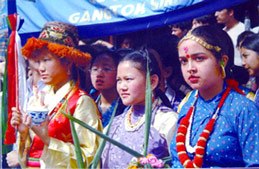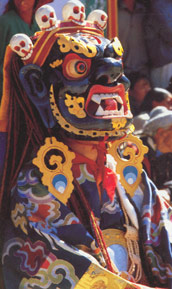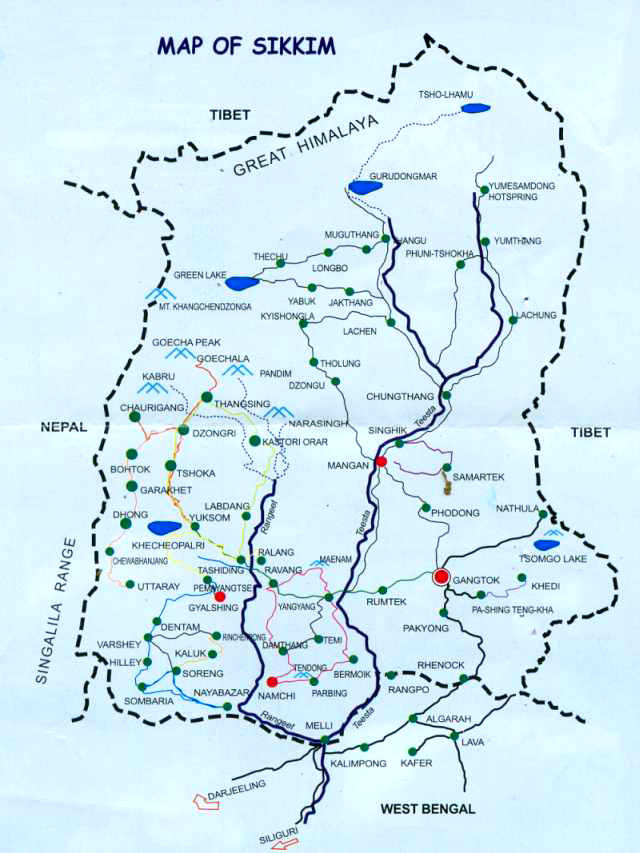| |
|
 
About Sikkim
Sikkim was earlier a protectorate of India with a monarchy government, but
in 1975 it metamorphosed as the twenty second state of Indian Union. The
population of the whole state is about 5, 40,000 as per the last census,
less than a populated colony of Delhi? Tucked away in the eastern corner
of the mighty Himalayas, Sikkim nestles among the snow-clad- ranges like a
precious jewel waiting to be discovered. Bordered by Tibet in the north,
Bhutan in the east, Nepal in the west and the Indian state West Bengal in
the south, Sikkim is an enchanting land that inspires divine imaginations
in the hearts of all who come within its magical range. The sacred and
exotic land is blessed by the great Buddhist saint Guru Padmasambhawa.
Sikkim harbors nearly 4000 varieties of flowering plants including 600
varieties of orchids, exotic collection of fauna and some of the rare and
endangered species of wildlife like red panda, snow leopard,
 and shapi
etc.An ancient land treasured with seemingly endless visual vistas,
pristine environment, and hospitality which is genuinely legendary. Here
lies Mount Kanchendzonga (8586mts) the third highest peak in the world
revered and worshipped by sikkimese as “Protective Deity”. The name Sikkim
is an appellation of the Nepalese word “Suk-him” meaning “A land of
happiness” the Bhutias call it “Bayul Demazong” or the “Hidden Valley of
Rice”, the name Sikkim is also an apt metaphor for enchanting experience,
adorable myths, and a mystical bliss. In short, Sikkim is a desirable
destination to go serenading seraphic sensuality of the Great Himalayan
foothills where the nature is at its best and the closest. The customs and
cultures of the different communities that reside here also present a
kaleidoscopic picture. A visit to Sikkim is to let you loose on a grand
tour of a place that is still very much virgin, unpolluted and innocent.
Sikkim offers the perfect destination for those wanting an escape from the
sanitized complexities of the city life and longing for some warmth and
friendship in the lap of nature. and shapi
etc.An ancient land treasured with seemingly endless visual vistas,
pristine environment, and hospitality which is genuinely legendary. Here
lies Mount Kanchendzonga (8586mts) the third highest peak in the world
revered and worshipped by sikkimese as “Protective Deity”. The name Sikkim
is an appellation of the Nepalese word “Suk-him” meaning “A land of
happiness” the Bhutias call it “Bayul Demazong” or the “Hidden Valley of
Rice”, the name Sikkim is also an apt metaphor for enchanting experience,
adorable myths, and a mystical bliss. In short, Sikkim is a desirable
destination to go serenading seraphic sensuality of the Great Himalayan
foothills where the nature is at its best and the closest. The customs and
cultures of the different communities that reside here also present a
kaleidoscopic picture. A visit to Sikkim is to let you loose on a grand
tour of a place that is still very much virgin, unpolluted and innocent.
Sikkim offers the perfect destination for those wanting an escape from the
sanitized complexities of the city life and longing for some warmth and
friendship in the lap of nature.
Districts headquarters: East
(Gangtok 5500 ft) West (Geyzing 5200 ft) North (Mangan 4800 ft) South (Namchi
4600 ft)
Tourist
Map

Map not to scale.
Top
|